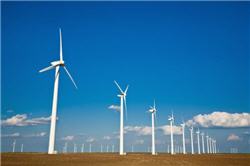
Military Leads in Renewable Energy Race
- By Elizabeth Freed
- Apr 10, 2012
As private and public enterprises pursue renewable energy projects, wind harnessing has been touted as a strong force in the industry. Whether the massive turbines make an appearance on federal land, an inland farm to help prop up profits, an island former plantation, or the Outer Continental Shelf in the Atlantic Ocean, captured wind continues to grow as a clean source of energy.
The U.S. Army is leading the march for renewable energy with a goal of 25 percent clean power by 2025. The Army Corps of Engineers has set up the Energy Initiatives Task Force (EITF) as of September, 2011 to help meet the deadline.
“The military has recognized its overreliance on fossil fuels,” said Jon Powers, Director of Outreach for EITF. “The significant strides toward renewable power are seen as operation-necessary, financially prudent, and mission-critical.”
With the increasing cost per barrel of oil and the high rate of water and gas resupply to convoys in combat zones, it is in the Army, Department of Defense, and taxpayers’ interest to invest in clean energy, said Powers.
In addition to the 168 current renewable projects, which include solar, wind, and geothermal, the Army has a Net Zero goal. This means that bases are to be designed with zero water and enegy waste. Currently, 17 pilot projects are set to go live by 2020.
Pew Charitable Trusts predicts that the Department of Defense will be spending more than $10 billion annually for clean energy projects. Currently, $7 billion is slated over the next ten years for various projects, including wind. The primary contract will be power purchase agreements, a now-common practice in the industry.
“It is the intent of the government only to purchase the energy that is produced, and not to acquire any generation assets. The contractors will finance, design, build, operate, own, and maintain the energy plants. The government will contract to purchase the power for up to 30 years in accordance with the terms and conditions stipulated in site or project specific agreements,” a statement by the Army Corps of Engineers reported.
The government is supporting wind harvesting in other ways. The Bureau of Ocean Energy Management (BOEM), in cooperation with the Department of Interior’s “Smart from the Start” wind energy initiative, is taking steps to develop wind farms along the North Atlantic coast. An initiative by the Obama Administration has set a goal of 10 gigawatts of wind capacity for the Outer Continental Shelf.
“Offshore Atlantic winds alone could produce an estimated 1,000 gigawatts of energy,” said a BOEM spokesperson. “Offshore winds tend to flow at higher sustained speeds than onshore winds, making these turbines more efficient.”
As with any project, there are unforeseen consequences to offshore wind harnessing. Fisheries can be affected as well as environmental concerns such as the critically endangered North Atlantic Right Whale. Additionally, vessel traffic and cultural shore resources in Rhode Island and Massachusetts are issues for stakeholders in those communities.
“BOEM collaborates with coastal states, tribes, industry leaders, non-governmental organizations, and intergovernmental task forces to coordinate offshore renewable energy development,” said the BOEM spokesperson. “These task forces include federal and state agencies, local governments, and tribes to ensure that stakeholder concerns are addressed during initial planning stages, promoting responsible development with minimal impacts.”
Islands also have the advantage of strong ocean winds, and First Wind, a US-based wind energy capacity, will soon open the largest wind facility in Hawaiir. The 69-megawatt Kawailoa Wind project will be built on the Kamehameha Schools’ Kawiloa Plantation lands on Oahu’s north shore. The site will feature 30 2.3 megawatt Siemens wind turbines, which will generate enough energy to power 14,500 homes or five percent of Oahu’s annual demand.
The project is the result of a Hawaii Public Utilities Commission-approved power purchase agreement between First Wind and the Hawaiian Electric Company (HECO), which serves more than 400,000 customers. Hawaii state laws state that clean energy must provide for 70 percent of electric and surface transportation power by 2030 with 40 percent originating from local sources.
“We are pleased to begin construction on our fourth project in Hawaii, and the largest wind energy facility in the state,” said Paul Gaynor, First Wind’s CEO, at the groundbreaking event in February 2012. “When it comes to renewable energy, Hawaii has proven to be a national leader, innovator, and an excellent partner.”
Discussions with residents and community organizations on the north shore began two years ago. First Wind developed a Habitat Conservation Plan that includes research funding and actions to protect and minimize incidental harm to federally listed species in the vicinity of the wind energy project.
About the Author
Elizabeth Freed is an Associate Content Editor for 1105 Media Inc.